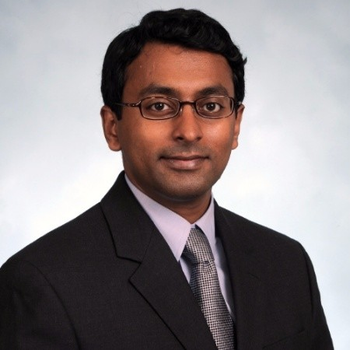
Early Career Psychiatrist Shares Thoughts on Annual Meeting
Sudhakar K. Shenoy, MD, discusses annual meeting, hot topics in child and adolescent psychiatry, and other issues in psychiatry.
CONFERENCE REPORTER
Early career psychiatrist Sudhakar K. Shenoy, MD, has already amassed a number of interesting experiences as a psychiatrist. He obtained a medical degree from the Bangalore Medical College and Research Institute in India as valedictorian in 2011. Shenoy completed his psychiatry residency and a child and adolescent psychiatry fellowship at the Southern Illinois University School of Medicine in Springfield, Illinois. He is the recipient of a number of awards, including the Community Service Award and Member of the Year Award from the Illinois Psychiatric Society, Systems of Care Special Program Clinical Projects Award, co-sponsored by SAMHSA's Center for Mental Health Services and AACAP's Committee on Community-based Systems of Care, and the Helen Beiser, MD, Best Resident Member Award from the Illinois Council of Child and Adolescent Psychiatry.
In addition to being an advocate for psychiatry and psychiatrists, Shenoy has served in a number of leadership roles, including president-elect of the Illinois Chapter of the Indo-American Psychiatric Association and scientific program committee member for the American Psychiatric Association.
Psychiatric Times chatted with Shenoy about this year’s APA Annual Meeting and the field of psychiatry.
Psychiatric Times: What do you hope your colleagues are taking away from this year’s meeting?
Sudhakar K. Shenoy, MD: As an early career psychiatrist (ECP), apart from learning, I hope our residents, fellows, residency applicants, international medical gradates (IMGs) and ECPs are focusing on professional networking opportunities and opportunities to explore various subspecialties and psychiatry itself, as well as career options and job settings that they could see themselves in.
PT: What most excited you about this year’s meeting?
Sudhakar: First of all, it's in New York City! I think we all were excited about that. I am also excited about AI and technology-related talks. Plus, New York City generally brings in a larger crowd to any conference, and like they say, more the merrier!
PT: There have seen some great advances in psychiatry recently. What are you most excited by?
Sudhakar: One of the most exciting advances in recent years has to be with technology, digital mental health, AI, and how these things are transforming how we deliver care. The pandemic also brought about a technology revolution of sorts and, with the right guardrails and regulations, I think technology could be powerful in helping with health care delivery and improving access.
PT: As an IMG, you have a unique perspective. How does psychiatry in the US compare with psychiatry in India?
Shenoy: In India, social determinants of health make a huge impact in how mental health issues present. In addiction, tobacco chewing, nicotine, and alcoholism seem to be more prevalent than other substances like opiates, cocaine, heroin, etc.
About the practice of psychiatry itself, I would say holistic care is given more importance, including improving lifestyle, as a way to improve mental health. More recently, practice of yoga, mindfulness, etc. seem to be very popular amongst people in their 20s and 30s for better mental health. Generally, medication is not the first option in the practice of psychiatry in India.
PT: You are also a child and adolescent psychiatrist, and we continue to hear about the impact COVID-19 has had on youth. What has been your experience been/what are you seeing in your patients? Do you have any clinical pearls for child and adolescent psychiatry colleagues?
Shenoy: Child mental health has been in crisis, further exacerbated by the pandemic. We still have the pediatric mental health emergency going on! The acuity and severity of patients' condition seems to be more pronounced than ever before, even on first contact. More studies show the impact of social media on teen mental health, and it is looking good.
A clinical pearl that I would give to my psychiatry colleagues is that access to child and adolescent psychiatry can be improved by a "collaborative care model". Look into this! There were sessions at the APA Annual Meeting on this topic.
PT: Anything else you would like our readers to know about the conference?
Shenoy: Just like New York City, the city that never sleeps, the APA Annual Meeting can be imagined as a place buzzing with insights. Each corner has offered a new opportunity to grow, and each encounter can spark a lasting collaboration. It’s thrilling, but let’s be honest: Navigating an expansive event can be challenging. I look to the APA Meetings App as a savvy friend who knows the ins and outs of the conference and can help ensure you squeeze every bit of value out of your time.
For complete conference coverage, please see
Newsletter
Receive trusted psychiatric news, expert analysis, and clinical insights — subscribe today to support your practice and your patients.













